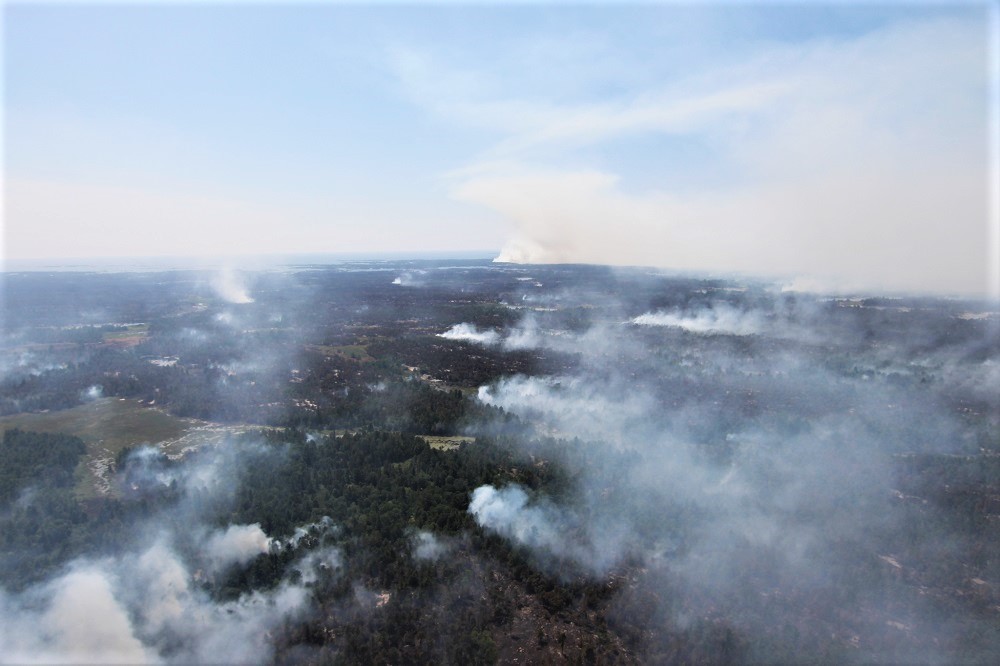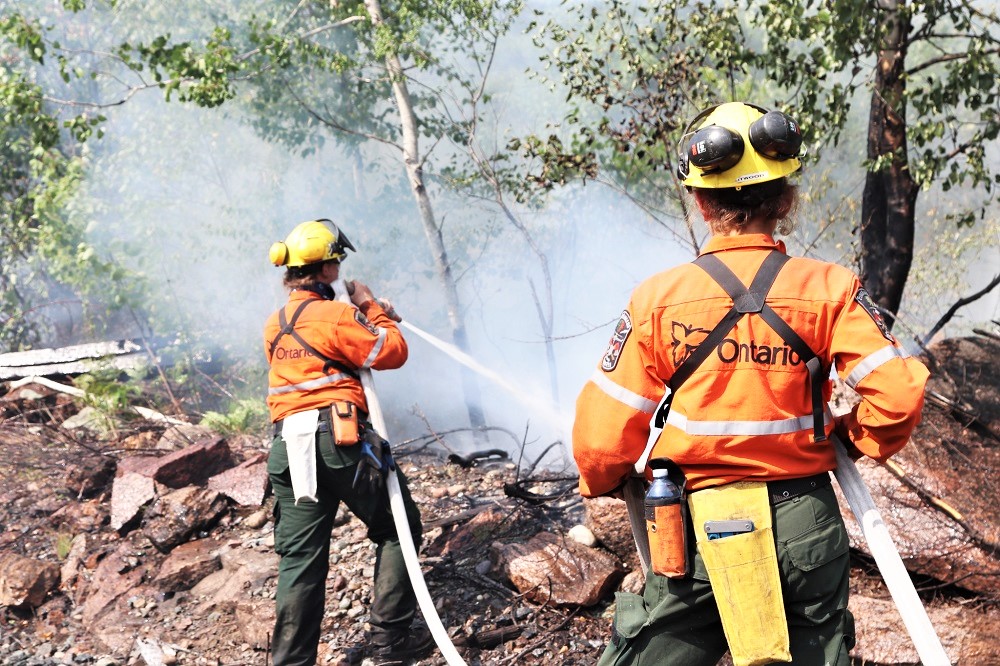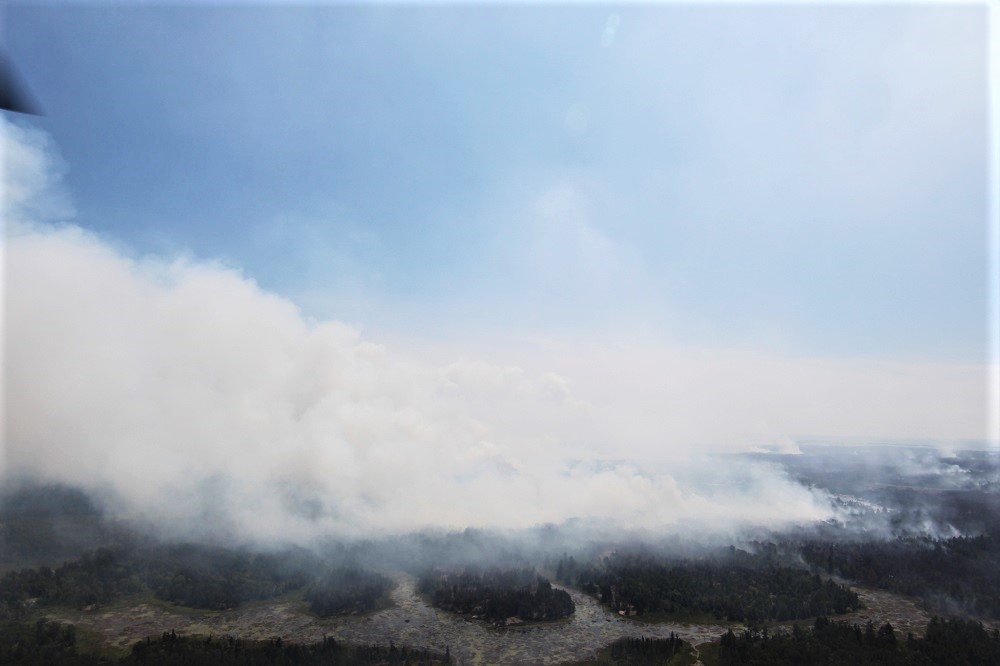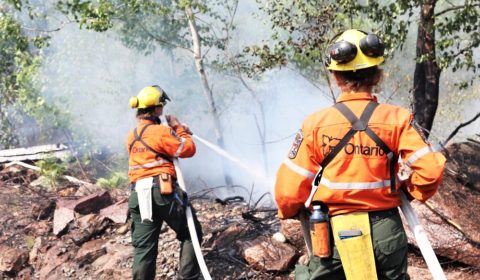That is smoke you smell from Parry Sound 33
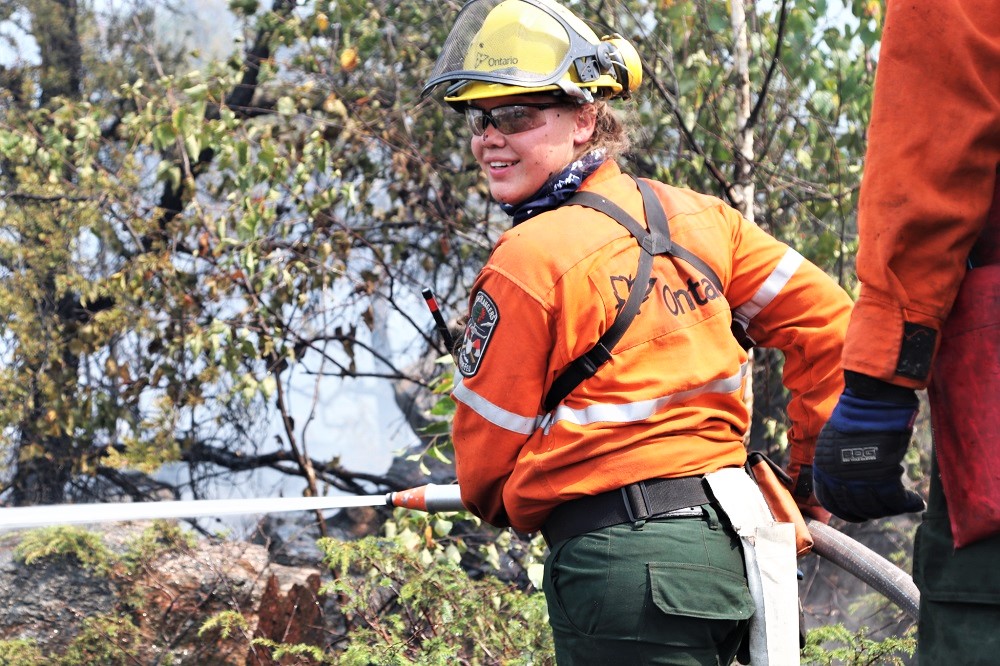
Mark Clairmont | MuskokaTODAY.com
BRITT — That smoke you smell isn’t likely someone locally breaking the no-burn ban.
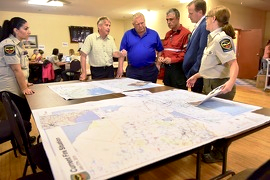
In Muskoka and farther away, if the wind’s right it’s Parry Sound 33.
So says Shayne McCool, fire specialist with the Ministry of Natural Resources and Forestry (MNRF).
He’s in Britt, just north of Parry Sound at the ministry’s forest fire temporary emergency management control centre for an area east of Georgian Bay.
The epicentre of a massive Ontario battle being waged (as of Tuesday) against 41 active forest fires across the northeast. Of those, 15 were not yet under control, 26 were either being held, under control or being observed.
Four new fires alone were detected in the region Monday, two of them they tamed by the end of the day.
That’s McCool’s job, and that of hundred of other Canadian and North American firefighters, dozens brought from the U.S. and Mexico to assist.
Ontario is facing one of its worst forest fire seasons in a decade, McCool says.
Especially so this far south in the MNRF’s northeastern Ontario region, here around Sudbury.
His figures back him up.
There are 880 fires this year, compared to a relatively low 243 last year.
The 10-year average the past decade is 517.
The largest is North Bay 72, which yesterday had grown to 27,275 hectares (each hectare the size of a football field).
Parry Sound 33, too, has grown since it was detected two weeks ago today, on July 18.
The latest figures on it are 10,139 hectares.
As of Wednesday it was still listed as “out of control,” but was being held in check 5 km from Hwy. 69, the TransCanada Highway and the major road between Parry Sound and Sudbury.
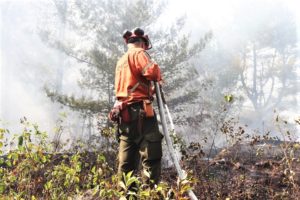
But the numbers change by the day as progress is made or lost.
McCool says incoming rain and thundershowers with accompanying lightning are a mixed blessing.
While the rain can help keep fires in check, they can’t totally quash them without the professional firefighters on the ground — who include a large group of technicians behind the lines crunching numbers and commanding the band of guerilla warfare combatants with the shovels, hoses and water backpacks.
It’s a real science knowing where to direct those young men and women on the frontlines.
McCool says depending on ground conditions, “dry lightning” strikes that aren’t accompanied by rain can be particularly problematic.
He says “human caused” fires are lessened by the fire ban restrictions.
But it’s all part of the annual forest firefighting season, which officially runs from April 1 to the end of October.
McCool says just over 600 people are involved, as of Tuesday, including 228 fire rangers.
That includes more than a dozen aircraft: helicopters, Beaver, Otter and CL-415 water bombers stationed
Muskoka Airport in Gravenhurst is one of the main seasonal bases, as it also serves as a repair centre for the planes.
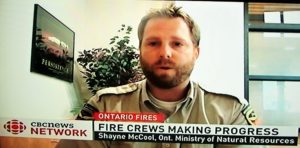
Wednesday, there were three Otters (two built in 1980 and one built in 1969) and a new larger CL-415.
McCool says it’s not unusual to see the aircraft and their pilots on the ground during firefighting season.
He says they act as “support” for the ground crews.
They are called in for specific tasks.
Back in Britt, where the fire and weather specialists — including biologists — plot their attacks like army commanders crouched over a large table of maps with the latest radar reports and statistics in hand, they dispatch the aircraft as needed.
Premier Doug Ford and Parry Sound-Muskoka MPP Norm Miller were there on the weekend seeing what they do, along with the MNRF Minister Jeff Yurek.
McCool says as for the smoke, other years smoke from fires in Quebec could be smelled in parts of Northern Ontario.
On Tuesday North Bay was blanketed in smoke that blew in from the west.
And while some progress is being made on a daily basis, it can at times seem like one step forward, two back.
- If you detect a forest fire of any size, call 310-FIRE (3473).
- For highway travel information, dial 511 HIGHWAYS (a great resource for all highway constructions or restrictions).
- And for ongoing forest fire information, go online to Ontario.ca/forest fires
